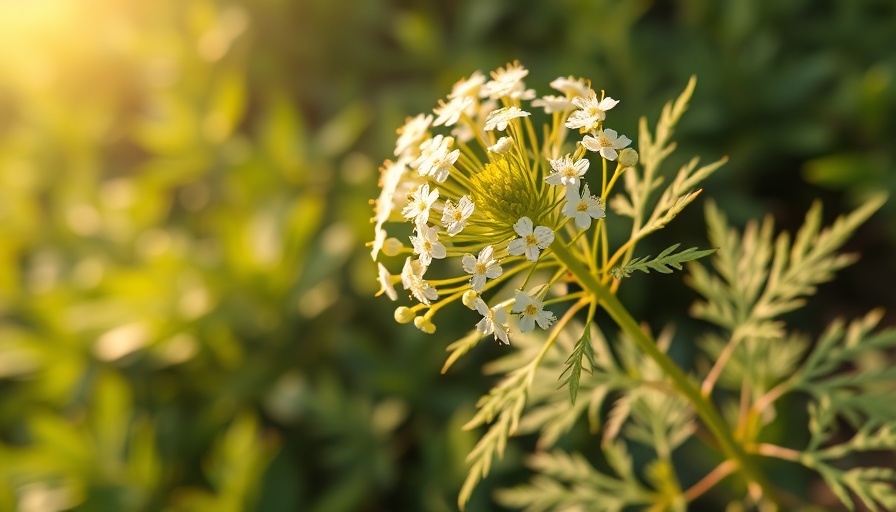
Identifying the Deceptive Beauty of Poison Hemlock
As the vibrant green of spring unfolds across Tennessee, an insidious visitor lurks among the joyous blooms: poison hemlock. This plant, with delicate white flowers that mimic the innocent Queen Anne’s lace, presents a real danger for homeowners and outdoor enthusiasts. Many may overlook its presence due to its beauty, but that deception is precisely what makes it more dangerous. Understanding how to identify poison hemlock—both for personal safety and environmental responsibility—is crucial.
The Distinct Features of Poison Hemlock
Recognizing poison hemlock can mean the difference between safety and disaster. Here’s how to identify this harmful plant:
- Height: Poison hemlock grows between 6 and 10 feet tall and can easily overshadow grasses and native plants, making it more visible in fields and roadsides.
- Stems: The hollow, smooth stems have small purple blotches that set them apart from similar plants. They lack hair, which is a distinctive feature.
- Leaves: The finely divided leaves resemble those of parsley or carrot greens and emit a strong, unpleasant odor when crushed.
- Flowers: Small white flowers bloom in umbrella-like clusters, typically from late spring to early summer, resembling Queen Anne's lace.
- Roots: The long, fleshy taproot is pale yellow and may be confused with wild parsnip.
The Dangers Posed by Poison Hemlock
Understanding the toxic properties of poison hemlock is essential. All parts of the plant are poisonous, and ingestion can lead to severe health issues or even death. The symptoms of poisoning include respiratory failure, muscle paralysis, and confusion. Pets and livestock are particularly vulnerable, stressing the need for homeowners to act decisively if they spot this weed.
Strategies for Safe Removal
Handling poison hemlock requires caution. Here’s how to approach removal:
- Wear Protective Gear: Always use gloves, masks, and long sleeves to avoid contact with the plant's toxins.
- Safe Removal: Cut the plant at its base and bag it securely to prevent seeds from dispersing. Always dispose of it according to local guidelines.
- Regular Monitoring: After removal, keep an eye on the area for any new growth. Early detection is key!
Preventing Future Growth
Beyond removal, proactive steps can help keep poison hemlock at bay. Consider planting native grasses and flowers that can outcompete it for resources. Engaging in community awareness initiatives can also be vital; educating fellow homeowners about this invasive species may minimize its spread.
The Future of Tennessee's Flora
Looking ahead, the fight against invasive species like poison hemlock will be crucial for the preservation of Tennessee's biodiversity. Communities must work together to monitor local flora and promote native species to create a more balanced ecosystem. Every resident has a role to play, and the health of Tennessee’s natural beauty depends on their vigilance.
Concluding Thoughts
By being informed about poison hemlock and understanding how to identify, handle, and prevent its spread, Tennessee homeowners can protect themselves, their pets, and the environment. It’s more than just dealing with an ugly plant—it’s about preserving the beauty of the landscape while ensuring safety. If you suspect you’ve encountered poison hemlock, take immediate action and help educate your community to safeguard against this botanical hazard.
Call to Action: Take action today by educating yourself and your neighbors about the identification and dangers of poison hemlock. Share this information to protect your community and keep Tennessee's natural beauty thriving!
 Add Row
Add Row  Add
Add 




Write A Comment